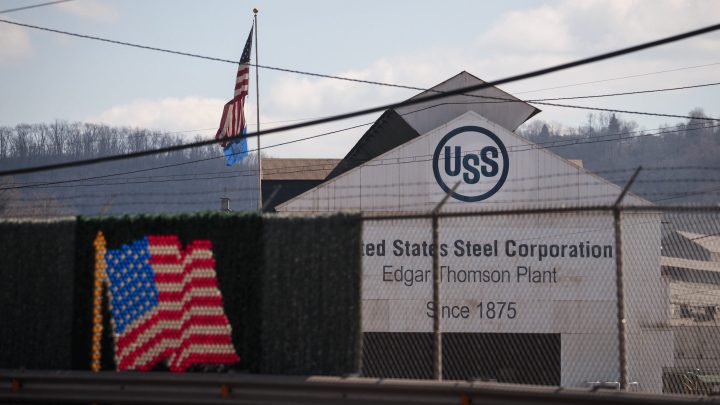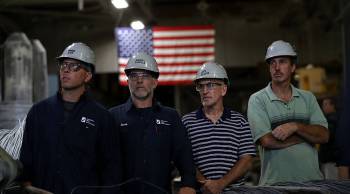
The US steel industry is going through a rough patch. How did it get there?
Share Now on:
The US steel industry is going through a rough patch. How did it get there?

President Biden has come out against the purchase of U.S. Steel by Japan’s Nippon Steel, saying it’s vital to maintain domestic ownership for one of America’s largest steel manufacturers. But that does bring up a question about an industry that — at least historically — has been one of the country’s most prominent: How is it doing now? Turns out, it’s going through a rough patch, and there’s disagreement over how things will look on the other side.
In the American steel industry’s infancy, in the late 19th and early 20th centuries, Britain was the king of steel.
“In the early years, trade protection was critical for the U.S. to get an advantage,” said James Bessen, director of the technology and policy research initiative at Boston University.
The U.S. dethroned the old king and became a world leader. But Bessen said by the 1950s and 1960s, the industry stopped innovating as much.
“Administration after administration, they had political support for their tariffs, and it was really to cover up the fact that they hadn’t been technologically progressive,” he said.
Today, American steel has innovated significantly, but the trade protections remain.
“What’s kept the industry earnings up has been tariff protection,” said Ned Hill, professor of economic development at Ohio State University. Without those protections, “you’re looking at the U.S. being 55% above the world price of steel,” he said.
And tariffs don’t quite make up for that price differential right now, he said.
“And so you’re seeing an increase in imports clearly that reduces demand for domestic steel,” said Gordon Johnson, CEO of GLJ Research.
Demand is looking soft for other reasons too, said Johnson. One of them has to do with the new king of steel, China.
“The U.S. accounts for roughly 4% of global steel consumption. China is 50%. So as goes China, [so] goes the global steel market,” he said.
China is having a real estate crisis, depressing demand and pushing supply onto the global market. But if this all sounds gloomy, Adam Green, managing director of World Steel Dynamics, suggests taking the long view.
“Pricing certainly goes in a cycle,” he said. And right now we’re in a temporary lull.
“Overall, the profitability in steel makers in the United States is much improved, versus where we were just a decade ago,” Green said.
He said one way U.S. steel makers have been able to improve margins is by consolidating — increasing market share. Which is one reason U.S. Steel has been so eager to be bought.
There’s a lot happening in the world. Through it all, Marketplace is here for you.
You rely on Marketplace to break down the world’s events and tell you how it affects you in a fact-based, approachable way. We rely on your financial support to keep making that possible.
Your donation today powers the independent journalism that you rely on. For just $5/month, you can help sustain Marketplace so we can keep reporting on the things that matter to you.

















